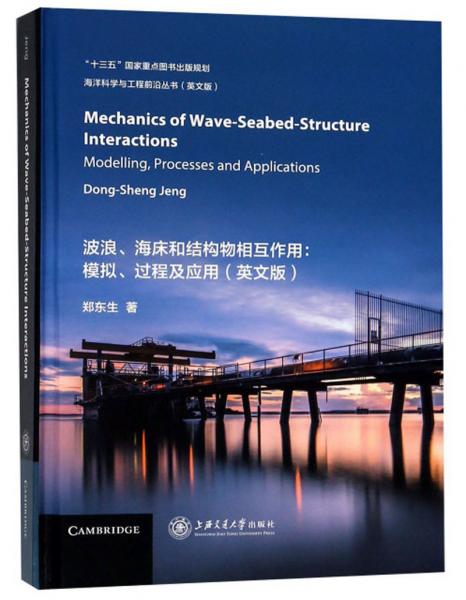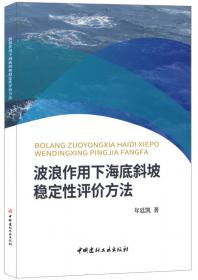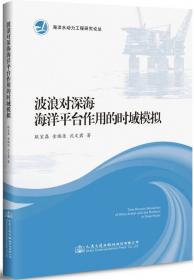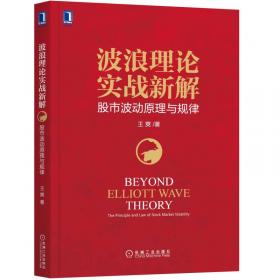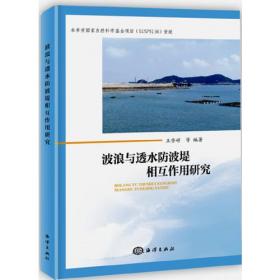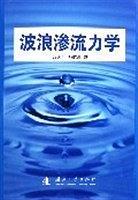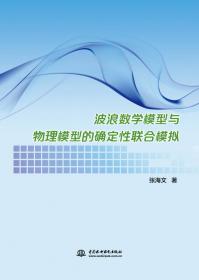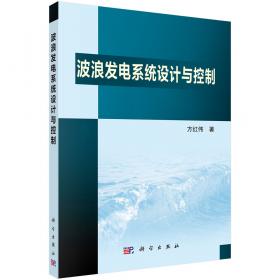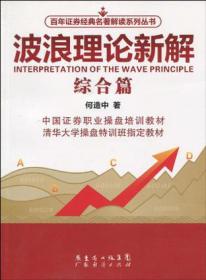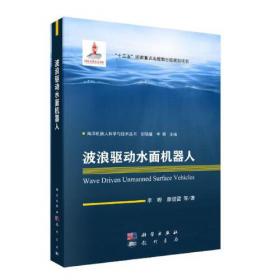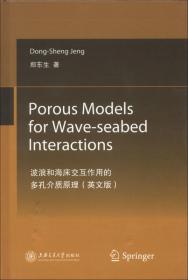波浪海床和结构物相互作用:模拟过程及应用(英文版)/海洋科学与工程前沿丛书
出版时间:
2018-08
版次:
1
ISBN:
9787313197573
定价:
150.00
装帧:
精装
开本:
16开
纸张:
胶版纸
页数:
358页
正文语种:
英语
2人买过
-
《波浪海床和结构物相互作用:模拟过程及应用(英文版)/海洋科学与工程前沿丛书》主要针对海洋岩土工程领域中流体与土壤结构交互作用机制及其相关工程,进行一系列详尽的理论介绍及其相应的工程应用介绍。
《波浪海床和结构物相互作用:模拟过程及应用(英文版)/海洋科学与工程前沿丛书》主要读者对象包括从事海洋岩土工程领域前沿研究的科研人员(含博硕士生)及从事工程设计的基础工程师。 1 Overview
1.1Background
1.2Recent Advances in Theoretical Models for Wave-Seabed Interactions(WSIs)
1.2.1An Overview of Theoretical Models
1.2.2Simplified Models
1.2.3Biot's Poro-Elastic Models for Oscillatory Mechanism
1.2.4Inelastic Models for Residual Mechanism
1.2.5Poro-Elastoplastic Models
1.2.6Waves Propagating over a Porous Seabed: Wave Damping and Seepage Flux
1.3Recent Advances in Wave-Induced Seabed Instability
1.3.1Shear Failure
1.3.2Liquefaction
1.4Recent Advances in Physical Modeling
1.4.1Wave Flume Experiments
1.4.2Compressive Tests
1.4.3Centrifugal Wave Experiment
1.5Recent Advances in Field Measurements
1.6Recent Advances in Wave-Seabed-Structure Interactions (WSSIs)
1.6.1Seawalls
1.6.2Breakwaters
1.6.3Pipelines
1.6.4Other Foundations
1.7Challenges in Future Studies
2 Basic Seabed Mechanisms
2.1Introduction
2.2Wave Models
2.2.1Linear Wave Model
2.2.2Fully Non-Linear Wave Models
2.3Wave-Induced Oscillatory Soil Response
2.3.1Yamamoto-Madsen Model
2.3.2Okusa (1985b) Model
2.3.3Mei-Foda (1981) Model
2.3.4u-p Approach
2.3.5u-U Approach
2.3.6Discussions: Comparisons and Validation of the Models
2.4Wave-Induced Residual Soil Response
2.4.11D Seed-Rahman Model
2.4.22D Seed-Rahman Model
2.4.3Poro-Elastoplastic Seabed Model
2.5Progressive Nature of Wave-Induced Liquefaction
2.5.1Two-Layered Fluid Systems
2.5.2Poro-Elastoplastic Soil Model for Progressive Liquefaction
2.6Solitary Wave over a Sloping Seabed
2.6.1Theoretical Model
2.6.2Comparison with Previous Works
2.6.3Results and Discussions
2.7Coupled Model for Wave-Seabed Interactions
3 Soil Response in Marine Sediments under Combined Loading of Waves and Currents
3.1Introduction
3.2Flow Models for Wave-Current Interaction
3.2.1Analytical Solution: Third-Order Approximation of Wave-Current Interactions
3.2.2Numerical Models of Wave-Current Interactions
3.3Seabed Model
3.3.1Boundary Value Problem
3.3.2Analytical Solutions and Numerical Models
3.3.3Treatment of Lateral Boundary Conditions
3.4Discussions
3.4.1Effects of Currents
3.4.2Seabed Liquefaction under Combined Wave and Current Loading
4 Integrated Model of Wave-Seabed Interactions around Caisson-Type Breakwaters
4.1Introduction
4.2Theoretical Model
4.2.1Wave Model
4.2.2Seabed Model
4.2.3Integration of Wave and Seabed Models
4.3Validation of the Model
4.3.1Lu's (2005) Experiment: Progressive Waves
4.3.2Tsai and Lee's (1995) Experiment: Standing Wave
4.3.3Mizutani and Mostafa's (1998) Experiment: Submerged Breakwater
4.3.4Mostafa et al.'s (1999) Experiment: Composite Breakwater
4.4Application 1: Seabed Response around Composite Breakwater under Ocean Wave Loading
4.4.1Consolidation of Seabed under Composite Breakwater and Static Water Pressure
4.4.2Dynamic Response of a Seabed
4.4.3Wave-Induced Momentary Liquefaction
4.5Application II: Water Waves over Permeable Submerged Breakwaters with Bragg Reflection
4.5.1Numerical Example Configuration
4.5.2Comparison with Experiments (Cho et al. 2004)
4.5.3Pore-Water Pressures
4.5.4Vertical Effective Stresses
4.5.5Liquefaction Potential
4.6Application III: Wave-Induced Dynamic Response in the Vicinity of a
Breakwater on a Sloping Seabed
4.6.1Wave-Seabed-Breakwater Interactions
4.6.2Wave-Induced Residual Liquefaction
5 Mechanics of Wave-Seabed-Pipeline Interactions
5.1Introduction
5.2Theoretical Formulations
5.2.1Wave Model
5.2.2Seabed Model
5.2.3Integration of Wave and Seabed Models
5.3Validations of Theoretical Models
5.4Oscillatory Soil Response around a Fully Buried Pipeline
5.4.1Oscillatory Soil Response in a Non-Homogeneous Seabed
5.4.2Internal Stresses of Pipeline
5.4.3Inertial Effects and Soil-Pipeline Contact Effects
5.4.4Effects of a Cover Layer
5.5Residual Soil Response around a Buried Pipeline
5.5.1Wave-Induced Pore Pressure Build-Up around a Buried Pipeline
5.5.2Poro-Elastic Seabed Model of Wave-Induced Residual Liquefaction
5.6Wave-Seabed-Pipeline Interactions in a Trench Layer
5.6.1Development of Liquefaction Potential
5.6.2Implementation for Practical Engineers
5.7Improved Analysis Method for Wave-Induced Pipeline Stability
5.7.1Physical Phenomena of Pipeline Losing On-Bottom Stability
5.7.2Criteria for Pipeline On-Bottom Instability
5.7.3Procedure for Analysis of Wave-Induced Pipeline On-Bottom Stability
5.7.4Comparison with DNV Recommended Practice
6 Three-Dimensional Model of Wave-Seabed Interactions around Breakwater Heads
6.1Introduction
6.2Wave Field around Breakwater Heads
6.2.1Linear Wave Model
6.2.2Non-Linear Wave Model
6.3Seabed Models
6.3.1Poro-Elastic Models of Oscillatory Soil Response
6.3.2Poro-Elastic Models of Residual Soil Response
6.3.3Poro-Elastoplastic Models
6.4Results and Discussions
6.4.1Wave Diffraction
6.4.2Wave Obliquity
6.4.3Comparison of 1D and 3D Models
6.4.4Comparison between Poro-Elastic and Poro-Elastoplastic Models
6.5Wave-Induced Oscillatory Soil Response around Two Breakwaters
7 Seabed Instability around Offshore Wind Turbine Foundations
7.1Introduction
7.2Monopile Foundation
7.2.1Seabed Model
7.2.2Wave Model
7.2.3Boundary Conditions
7.2.4Integrated Process
7.2.5Discussion: Seabed Response around a Monopile
7.2.6Discussion: Parametric Studies of Pore Pressure around the Monopile
7.2.7Discussion: Effect of Wavelength on Pore-Water Pressure around a Monopile
7.2.8Discussion: Soil Displacements
7.2.9Discussion: Displacement of the Monopile
7.3Case Study: Donghai Offshore Wind Farm, Shanghai, China
7.3.1General Introduction of Donghai Offshore Wind Farm
7.3.2Characteristics of DH-OWF and Its Engineering Solutions
7.3.3Foundation of Donghai Offshore Wind Farm
7.3.4Numerical Model
7.3.5Discussion:Effects of Wave Parameters on Hydrodynamics
7.3.6Discussion:Wave—Induced Pore Pressure around HRSF
7.3.7Discussion:Effects of Wave and Soil Parameters on Soil Response
7.3.8Discussion:Wave—Induced Liquefaction around HRSF
8 Physical Modelling:One-Dimensional Compressive Tests
8.1Introduction
8.2Experimental Facility
8.3Experiments with a Sandy Deposit
8.3.1Materials
8.3.2Experimental Procedure
8.3.3Comparison with Previous Analytical Solution
8.3.4Discusslon:Attenuation and Phase Lag of Pore Pressures
8.3.5Discusslon:Effects of Wave Cycles
8.3.6Discussion:Efiects of Wave Period and Wave Height
8.3.7Discussion:Efiects of Relative Density and Saturation
8.3.8Discussion:Sandy Deposit Liquefaction
8.3.9Discussion:Variations of Sandy Deposit Height
8.4Experiments with Sand.Clay Mixtures
8.4.1Experimental Details
8.4.2Discussion:Effects of Clay Content(cc)
8.4.3Discussion:Settlement ofthe Deposit
Appendix A Analytical Solution for a Seabed of Finite Thickness(Hsu&Jeng1994)
Appendix B Derivation of u-p Approximation(Jeng et a1.1999)
Appendix C Derivation of u-U Approximation(Cha et a1.2002)
Appendix D Mathematical Derivations of Analytical Solutions for Residual Soil Response(Jeng el a1.2007)
Appendix E Mathematical Model of the Two-Layered Viscous Fluid System(Liuet a1.2009)
References
AuthOFIndex
SubjectIndex
-
内容简介:
《波浪海床和结构物相互作用:模拟过程及应用(英文版)/海洋科学与工程前沿丛书》主要针对海洋岩土工程领域中流体与土壤结构交互作用机制及其相关工程,进行一系列详尽的理论介绍及其相应的工程应用介绍。
《波浪海床和结构物相互作用:模拟过程及应用(英文版)/海洋科学与工程前沿丛书》主要读者对象包括从事海洋岩土工程领域前沿研究的科研人员(含博硕士生)及从事工程设计的基础工程师。
-
目录:
1 Overview
1.1Background
1.2Recent Advances in Theoretical Models for Wave-Seabed Interactions(WSIs)
1.2.1An Overview of Theoretical Models
1.2.2Simplified Models
1.2.3Biot's Poro-Elastic Models for Oscillatory Mechanism
1.2.4Inelastic Models for Residual Mechanism
1.2.5Poro-Elastoplastic Models
1.2.6Waves Propagating over a Porous Seabed: Wave Damping and Seepage Flux
1.3Recent Advances in Wave-Induced Seabed Instability
1.3.1Shear Failure
1.3.2Liquefaction
1.4Recent Advances in Physical Modeling
1.4.1Wave Flume Experiments
1.4.2Compressive Tests
1.4.3Centrifugal Wave Experiment
1.5Recent Advances in Field Measurements
1.6Recent Advances in Wave-Seabed-Structure Interactions (WSSIs)
1.6.1Seawalls
1.6.2Breakwaters
1.6.3Pipelines
1.6.4Other Foundations
1.7Challenges in Future Studies
2 Basic Seabed Mechanisms
2.1Introduction
2.2Wave Models
2.2.1Linear Wave Model
2.2.2Fully Non-Linear Wave Models
2.3Wave-Induced Oscillatory Soil Response
2.3.1Yamamoto-Madsen Model
2.3.2Okusa (1985b) Model
2.3.3Mei-Foda (1981) Model
2.3.4u-p Approach
2.3.5u-U Approach
2.3.6Discussions: Comparisons and Validation of the Models
2.4Wave-Induced Residual Soil Response
2.4.11D Seed-Rahman Model
2.4.22D Seed-Rahman Model
2.4.3Poro-Elastoplastic Seabed Model
2.5Progressive Nature of Wave-Induced Liquefaction
2.5.1Two-Layered Fluid Systems
2.5.2Poro-Elastoplastic Soil Model for Progressive Liquefaction
2.6Solitary Wave over a Sloping Seabed
2.6.1Theoretical Model
2.6.2Comparison with Previous Works
2.6.3Results and Discussions
2.7Coupled Model for Wave-Seabed Interactions
3 Soil Response in Marine Sediments under Combined Loading of Waves and Currents
3.1Introduction
3.2Flow Models for Wave-Current Interaction
3.2.1Analytical Solution: Third-Order Approximation of Wave-Current Interactions
3.2.2Numerical Models of Wave-Current Interactions
3.3Seabed Model
3.3.1Boundary Value Problem
3.3.2Analytical Solutions and Numerical Models
3.3.3Treatment of Lateral Boundary Conditions
3.4Discussions
3.4.1Effects of Currents
3.4.2Seabed Liquefaction under Combined Wave and Current Loading
4 Integrated Model of Wave-Seabed Interactions around Caisson-Type Breakwaters
4.1Introduction
4.2Theoretical Model
4.2.1Wave Model
4.2.2Seabed Model
4.2.3Integration of Wave and Seabed Models
4.3Validation of the Model
4.3.1Lu's (2005) Experiment: Progressive Waves
4.3.2Tsai and Lee's (1995) Experiment: Standing Wave
4.3.3Mizutani and Mostafa's (1998) Experiment: Submerged Breakwater
4.3.4Mostafa et al.'s (1999) Experiment: Composite Breakwater
4.4Application 1: Seabed Response around Composite Breakwater under Ocean Wave Loading
4.4.1Consolidation of Seabed under Composite Breakwater and Static Water Pressure
4.4.2Dynamic Response of a Seabed
4.4.3Wave-Induced Momentary Liquefaction
4.5Application II: Water Waves over Permeable Submerged Breakwaters with Bragg Reflection
4.5.1Numerical Example Configuration
4.5.2Comparison with Experiments (Cho et al. 2004)
4.5.3Pore-Water Pressures
4.5.4Vertical Effective Stresses
4.5.5Liquefaction Potential
4.6Application III: Wave-Induced Dynamic Response in the Vicinity of a
Breakwater on a Sloping Seabed
4.6.1Wave-Seabed-Breakwater Interactions
4.6.2Wave-Induced Residual Liquefaction
5 Mechanics of Wave-Seabed-Pipeline Interactions
5.1Introduction
5.2Theoretical Formulations
5.2.1Wave Model
5.2.2Seabed Model
5.2.3Integration of Wave and Seabed Models
5.3Validations of Theoretical Models
5.4Oscillatory Soil Response around a Fully Buried Pipeline
5.4.1Oscillatory Soil Response in a Non-Homogeneous Seabed
5.4.2Internal Stresses of Pipeline
5.4.3Inertial Effects and Soil-Pipeline Contact Effects
5.4.4Effects of a Cover Layer
5.5Residual Soil Response around a Buried Pipeline
5.5.1Wave-Induced Pore Pressure Build-Up around a Buried Pipeline
5.5.2Poro-Elastic Seabed Model of Wave-Induced Residual Liquefaction
5.6Wave-Seabed-Pipeline Interactions in a Trench Layer
5.6.1Development of Liquefaction Potential
5.6.2Implementation for Practical Engineers
5.7Improved Analysis Method for Wave-Induced Pipeline Stability
5.7.1Physical Phenomena of Pipeline Losing On-Bottom Stability
5.7.2Criteria for Pipeline On-Bottom Instability
5.7.3Procedure for Analysis of Wave-Induced Pipeline On-Bottom Stability
5.7.4Comparison with DNV Recommended Practice
6 Three-Dimensional Model of Wave-Seabed Interactions around Breakwater Heads
6.1Introduction
6.2Wave Field around Breakwater Heads
6.2.1Linear Wave Model
6.2.2Non-Linear Wave Model
6.3Seabed Models
6.3.1Poro-Elastic Models of Oscillatory Soil Response
6.3.2Poro-Elastic Models of Residual Soil Response
6.3.3Poro-Elastoplastic Models
6.4Results and Discussions
6.4.1Wave Diffraction
6.4.2Wave Obliquity
6.4.3Comparison of 1D and 3D Models
6.4.4Comparison between Poro-Elastic and Poro-Elastoplastic Models
6.5Wave-Induced Oscillatory Soil Response around Two Breakwaters
7 Seabed Instability around Offshore Wind Turbine Foundations
7.1Introduction
7.2Monopile Foundation
7.2.1Seabed Model
7.2.2Wave Model
7.2.3Boundary Conditions
7.2.4Integrated Process
7.2.5Discussion: Seabed Response around a Monopile
7.2.6Discussion: Parametric Studies of Pore Pressure around the Monopile
7.2.7Discussion: Effect of Wavelength on Pore-Water Pressure around a Monopile
7.2.8Discussion: Soil Displacements
7.2.9Discussion: Displacement of the Monopile
7.3Case Study: Donghai Offshore Wind Farm, Shanghai, China
7.3.1General Introduction of Donghai Offshore Wind Farm
7.3.2Characteristics of DH-OWF and Its Engineering Solutions
7.3.3Foundation of Donghai Offshore Wind Farm
7.3.4Numerical Model
7.3.5Discussion:Effects of Wave Parameters on Hydrodynamics
7.3.6Discussion:Wave—Induced Pore Pressure around HRSF
7.3.7Discussion:Effects of Wave and Soil Parameters on Soil Response
7.3.8Discussion:Wave—Induced Liquefaction around HRSF
8 Physical Modelling:One-Dimensional Compressive Tests
8.1Introduction
8.2Experimental Facility
8.3Experiments with a Sandy Deposit
8.3.1Materials
8.3.2Experimental Procedure
8.3.3Comparison with Previous Analytical Solution
8.3.4Discusslon:Attenuation and Phase Lag of Pore Pressures
8.3.5Discusslon:Effects of Wave Cycles
8.3.6Discussion:Efiects of Wave Period and Wave Height
8.3.7Discussion:Efiects of Relative Density and Saturation
8.3.8Discussion:Sandy Deposit Liquefaction
8.3.9Discussion:Variations of Sandy Deposit Height
8.4Experiments with Sand.Clay Mixtures
8.4.1Experimental Details
8.4.2Discussion:Effects of Clay Content(cc)
8.4.3Discussion:Settlement ofthe Deposit
Appendix A Analytical Solution for a Seabed of Finite Thickness(Hsu&Jeng1994)
Appendix B Derivation of u-p Approximation(Jeng et a1.1999)
Appendix C Derivation of u-U Approximation(Cha et a1.2002)
Appendix D Mathematical Derivations of Analytical Solutions for Residual Soil Response(Jeng el a1.2007)
Appendix E Mathematical Model of the Two-Layered Viscous Fluid System(Liuet a1.2009)
References
AuthOFIndex
SubjectIndex
查看详情
-
全新
广东省广州市
平均发货16小时
成功完成率92.74%
-
全新
北京市海淀区
平均发货9小时
成功完成率97.83%
-
全新
山东省济宁市
平均发货57小时
成功完成率82.31%
-
全新
浙江省嘉兴市
平均发货12小时
成功完成率94.87%
-
全新
江苏省无锡市
平均发货8小时
成功完成率96.57%
-
全新
北京市丰台区
平均发货28小时
成功完成率87.03%
-
全新
广东省广州市
平均发货16小时
成功完成率92.69%
-
全新
天津市西青区
平均发货14小时
成功完成率90.9%
-
全新
广东省广州市
平均发货16小时
成功完成率91.88%
-
全新
广东省广州市
平均发货15小时
成功完成率91.34%
-
全新
广东省广州市
平均发货7小时
成功完成率94.68%
-
全新
天津市西青区
平均发货14小时
成功完成率90.9%
-
全新
江苏省南京市
平均发货12小时
成功完成率85.76%
-
全新
四川省成都市
平均发货10小时
成功完成率96.17%
-
全新
北京市西城区
平均发货12小时
成功完成率94.05%
-
全新
河北省保定市
平均发货27小时
成功完成率88.63%
-
全新
江苏省无锡市
平均发货9小时
成功完成率96.44%
-
全新
河北省保定市
平均发货14小时
成功完成率93.65%
-
全新
北京市东城区
平均发货10小时
成功完成率96.07%
-
全新
北京市朝阳区
平均发货12小时
成功完成率94.43%
-
全新
广东省广州市
平均发货7小时
成功完成率89.81%
-
全新
北京市通州区
平均发货42小时
成功完成率85.29%
-
全新
湖南省邵阳市
平均发货3小时
成功完成率85.17%
-
全新
-
全新
北京市通州区
平均发货16小时
成功完成率77.78%
-
全新
北京市通州区
平均发货34小时
成功完成率62.96%
-
全新
北京市通州区
平均发货34小时
成功完成率62.96%
-
全新
江苏省南京市
平均发货6小时
成功完成率98.66%
-
全新
广东省广州市
平均发货17小时
成功完成率93.75%
-
全新
浙江省嘉兴市
平均发货9小时
成功完成率95.31%
-
全新
上海市黄浦区
平均发货9小时
成功完成率95.09%
-
全新
河南省开封市
平均发货18小时
成功完成率86.89%

 占位居中
占位居中

